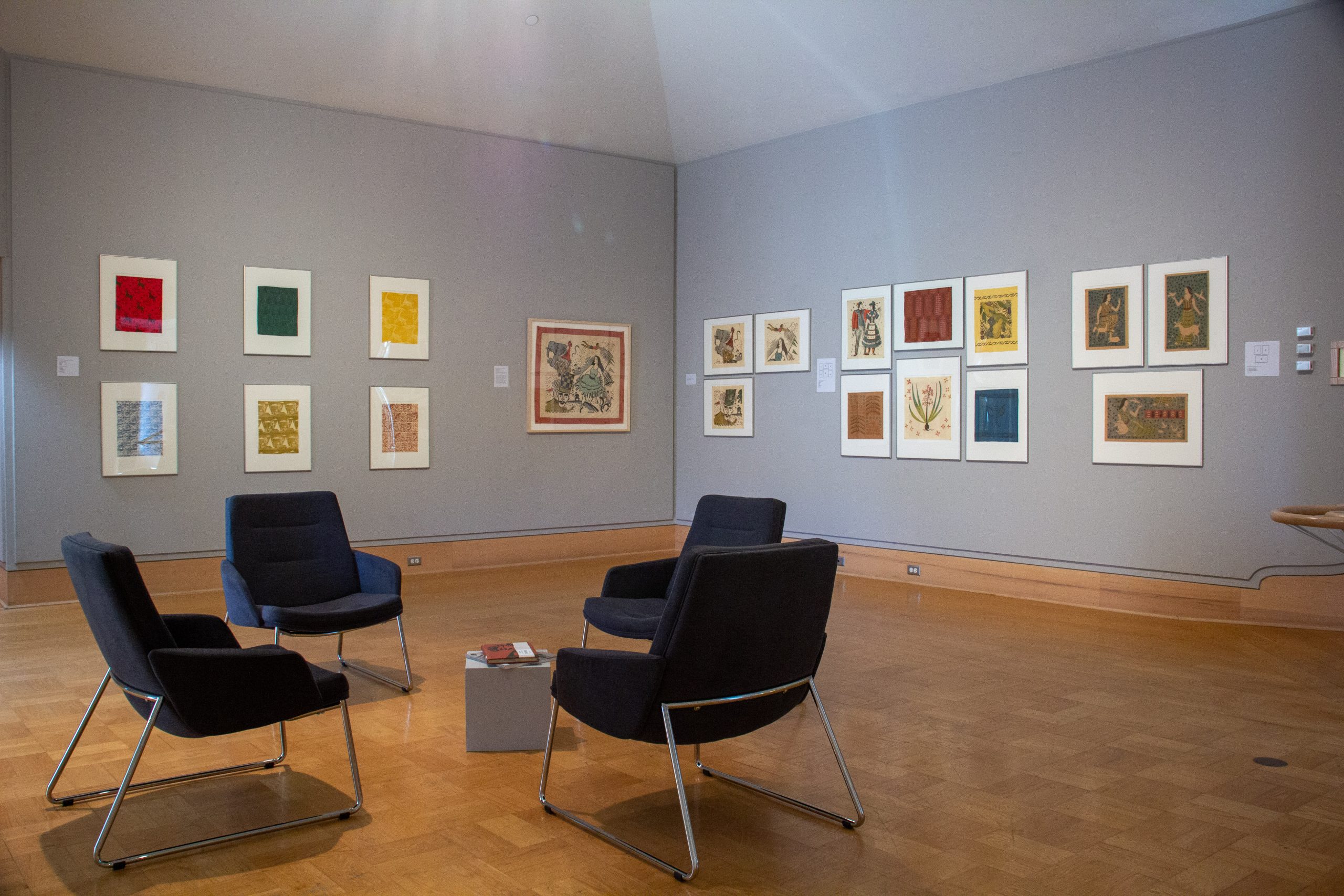The New Deal’s basic story is familiar to most: Franklin D. Roosevelt inaugurated a massive series of job creation programs amid the Great Depression. The specifics of this are less clearly understood; few Americans today could even name one program. The Wriston Art Gallery exhibit “Lost Identities and Loose Threads” explores The Milwaukee Handicraft Project (MHP), a little-known component of the New Deal. Curated by senior Sarah Matthews, it closed on Friday, May 12 after being open since late March.
As the exhibit’s accompanying plaque explains, the MHP was a seven-year program in the New Deal’s Works Progress Administration. It employed 5000 women, who created a variety of handicrafts, such as toys, curtains and tablecloths. The program was unique for its integrated work force of Black and white peoples, most of whom were of the lower and middle class.
Matthews’ exhibit took place in the Wriston Art Center’s Hoffmaster Gallery—larger than the Leech Gallery, but smaller than the Kohler Gallery. The artworks themselves were placed on four walls, in varying configurations. There were a few chairs in the middle for convenient leisure. In addition, a central table included literature on the MPH, providing an opportunity for further research by any curious onlooker.
Two walls faced each other with six and eight fabrics, respectively. The former wall’s descriptive titles were: “Deer and Hearts,” “Leaves,” “Goose,” “Roosters,” “Pyramids” and “Animals in Red.” Each appeared starkly different in flavor and showed tasteful individuality despite its commercial nature. In fact, the patterns included occasional inconsistencies, which prioritized human creation over the eerie perfection of an automatic printer.
On the wall beside this, there were three images of women with goats and birds. These designs were more ornate images than the previous six repeated patterns. Each depiction occupied a grey space between 2D and 3D figuration. There was a certain aesthetic of flatness from the choice of side profiles, but the women’s bodies turned with a subtle contrapposto.
The animals of these images were celestially white, while the dotted background was so staggeringly prominent that it questioned its status as secondary material. An element of Kahloesque magical realism was present, and the avant-garde style of Henri Rousseau was as well. Whether these comparisons have any merit as actual influence is unlikely, but it establishes the expertise with which these artists were working.
A set of six mixed figurative depictions and design patterns was also included. Their descriptive titles demonstrated the wide variety in topics: “Couple in costume,” “Red flora,” “Fruit,” “Tree,” “Flower” and “Blue leaves.” These six were comparatively less interesting than the three designs beside them: “The Circus” set.

Unlike most works of the exhibit, “The Circus” was a signed piece, designed by Barbara Warren. The fantastical imagery was hugely captivating, and the abstract placement of objects cleverly defied expectations. Each aspect appeared in constant motion, fittingly for a circus atmosphere. They emerged out of each other in a surrealist vein, taking a few glances to fully parse.
Anonymity was a key feature of the exhibit. The explanatory plaque emphasized how little is known about the thousands of women who produced the handicraft items. In fact, most information on the MHP stems solely from the project’s director, Elsa Ulbricht. As a result, the skills of many other women are conflated into a single talented figurehead.
Five photographs demonstrated the striking extremity of these nameless women. They depicted the handicraft creation process with the artists’ hands, but not faces. Without their faces, their individuality is erased.
Matthews went even further than one might expect from typical art curation. She collaborated with Antionette Powell, a research librarian at Seeley G. Mudd library, to discover the names of at least 30 artists in the MHP program. While not entirely erasing the anonymity, it revealed many names which should be better known.
Traditionally, these handicrafts might be dismissed as “low culture.” Matthews rejects this designation. Her research and display of them discovered missing context for the women of the Great Depression. In fact, Matthews’ inclusion of photographs during their construction declared the creation itself to be art. Clearly their value is more profound than was once supposed.

